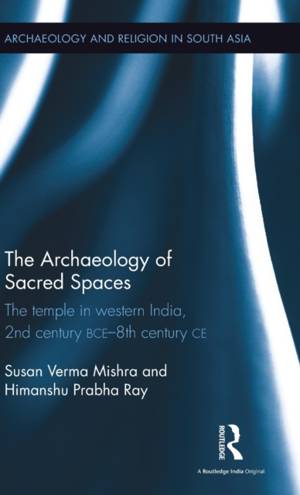
- Afhalen na 1 uur in een winkel met voorraad
- Gratis thuislevering in België vanaf € 30
- Ruim aanbod met 7 miljoen producten
- Afhalen na 1 uur in een winkel met voorraad
- Gratis thuislevering in België vanaf € 30
- Ruim aanbod met 7 miljoen producten
The Archaeology of Sacred Spaces
The Temple in Western India, 2nd Century Bce-8th Century CE
Susan Verma Mishra, Himanshu Prabha RayOmschrijving
This volume focuses on the religious shrine in western India as an institution of cultural integration in the period spanning 200 BCE to 800 CE. It presents an analysis of religious architecture at multiple levels, both temporal and spatial, and distinguishes it as a ritual instrument that integrates individuals and communities into a cultural fabric. The work shows how these structures emphasise on communication with a host of audiences such as the lay worshipper, the ritual specialist, the royalty and the elite as well as the artisan and the sculptor. It also examines religious imagery, inscriptions, traditional lore and Sanskrit literature.
The book will be of special interest to researchers and scholars of ancient Indian history, Hinduism, religious studies, architecture and South Asian studies.
Specificaties
Betrokkenen
- Auteur(s):
- Uitgeverij:
Inhoud
- Aantal bladzijden:
- 284
- Taal:
- Engels
- Reeks:
Eigenschappen
- Productcode (EAN):
- 9781138679207
- Verschijningsdatum:
- 16/08/2016
- Uitvoering:
- Hardcover
- Formaat:
- Genaaid
- Afmetingen:
- 147 mm x 218 mm
- Gewicht:
- 476 g

Alleen bij Standaard Boekhandel
Beoordelingen
We publiceren alleen reviews die voldoen aan de voorwaarden voor reviews. Bekijk onze voorwaarden voor reviews.











